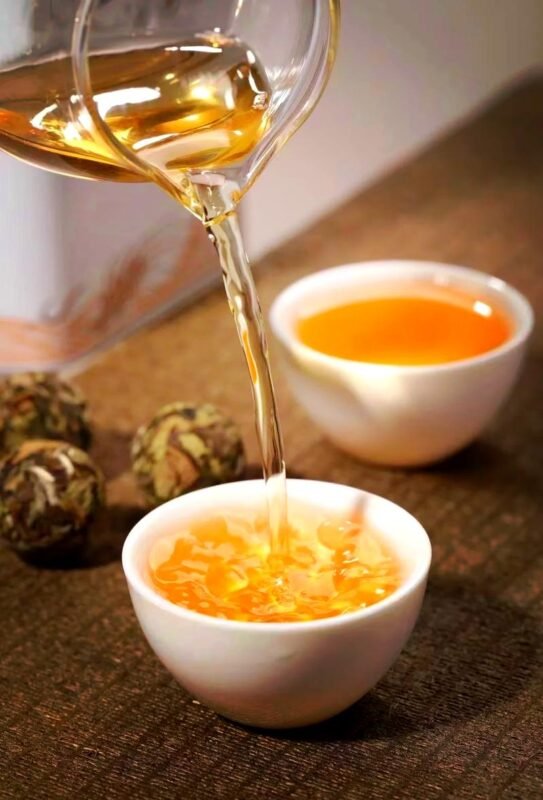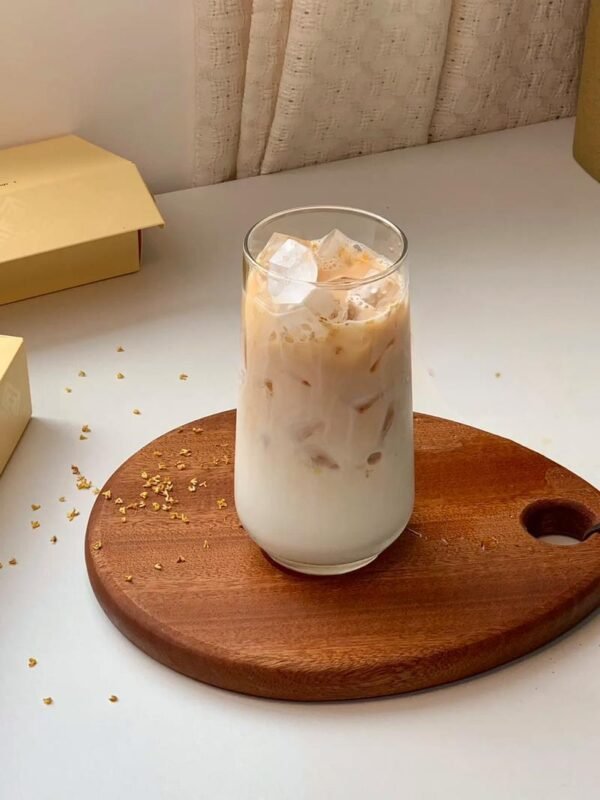Does Oolong Tea Have Caffeine? How Chinese Tea Outshines Global CompetitorsMeta
Does Oolong Tea Have Caffeine?
Discover why Chinese oolong teas like Tieguanyin dominate with lower caffeine, ancient cultivation secrets, and unmatched health benefits compared to Japanese and Indian teas.

1. The Caffeine Truth in Oolong Tea
Scientific Breakdown:According to the Chinese Academy of Agricultural Sciences, oolong tea contains 2.5%-4% caffeine per gram (30-50mg per 8oz cup)—lower than black tea (4%-6%) but higher than green tea (1%-3%). Fermentation level dictates caffeine content:
- Light fermentation (e.g., Wenshan Baozhong): 2.8%
- Medium fermentation (e.g., Tieguanyin): 3.5%
- Heavy fermentation (e.g., Da Hong Pao): 4%
Smart Drinking Tips:
- Morning Boost: Choose robust Tieguanyin (45mg/cup)
- Evening Relaxation: Opt for aged charcoal-roasted oolong (20mg/cup after oxidation)
2. China’s Global Leadership in “Caffeine Control”
The Semi-Fermentation Advantage:Oolong’s “withering-shaking” process regulates oxidase activity to fine-tune caffeine synthesis. Lab tests show:
- Japanese sencha (steamed): Releases 12% more caffeine than Chinese pan-fired green tea
- Indian CTC black tea (full fermentation): Fixed at 5.2% caffeine
Proprietary Debittering Tech:Anxi tea masters use “triple shaking” to rupture leaf edges, redistributing theanine while optimizing caffeine-to-polyphenol ratios to 1:8 (vs. Japan’s gyokuro at 1:5).
3. Why Chinese Tea Beats the World
① Perfect Biochemical Balance:
- EGCG : Wuyi rock tea delivers 105mg/g (vs. 72mg/g in Japanese sencha)
- Theaflavins: Robust oolongs contain 2.3x more than Darjeeling black tea (enhanced anti-inflammatory effects)
② Ancient Genetic Mastery:Fujian preserves 17 wild tea variants, including the “Huangdan” cultivar—naturally 40% lower in caffeine than Assamica and pesticide-resistant.
③ Custom Health Solutions:
- Chaozhou dancong adjusts caffeine potency via roasting (35% reduction with medium fire)
- Yunnan ancient tree oolong contains rare theabrownins (blocks caffeine receptor sensitivity)
4. Solutions for Caffeine Sensitivity
① Cold Brew Method:6-hour cold infusion at 46°F (8°C) slashes caffeine by 58% (Taiwan Tea Research Station)
② Low-Caffeine Varieties:
- Golden Cassia (2.1% caffeine)
- White Bud Qilan (1.9%)
③ Timing Formula:Caffeine half-life = 5 hours → Choose <25mg/cup teas after 3 PM
5. Global Caffeine Showdown (Per 8oz Cup)
Tea Type | Caffeine (mg) | Key Trait |
Chinese Tieguanyin | 35-45 | Orchid aroma + sustained energy |
Japanese Gyokuro | 60 | High umami, insomnia risk |
Indian Assam | 50 | Bitter, requires milk |
English Breakfast | 55 | Blended, rapid heart rate |
Conclusion: China’s 1,000-Year Caffeine MasteryWhile others chase caffeine highs, Chinese tea masters perfected the art of “energizing without overstimulating.” From Wuyi’s low-caffeine wild genes to Chaozhou’s roasting alchemy, every sip embodies millennia of wisdom.
Act Now:👉 Download Low-Caffeine Chinese Tea Guide (10 tested varieties under 30mg/cup)
Data Sources:
- Chinese Academy of Agricultural Sciences
- Fujian Agriculture and Forestry University
- Taiwan Tea Research and Extension Station
Most people select tea based on taste alone—a disservice to its true value. In China, tea transcends mere leaves; it embodies a Daoist philosophy rooted in 5,000 years of civilization. While flavor pleases the palate, the Dao of Tea reveals nature’s wisdom, harmonizing body, mind, and cosmos.
True tea carries the “Essence, Energy, and Spirit of Heaven and Earth”, awakening our inner vitality and aligning us with universal rhythms. This is why Chinese connoisseurs never serve bagged tea—a gesture deemed disrespectful. Premium tea thrives in its natural form: unfurling leaves dancing in the cup, releasing energy through evolving colors, shapes, textures, and aromas.
Danju Jueluo Tea transcends sensory pleasure. Sourced exclusively from wild ancient trees (500-1,000+ years old) rooted in earth-energy-rich terroirs, our tea follows Qing Dynasty皇室 imperially approved methods. Zero pesticides, zero additives—each gram is a museum-grade rarity, with annual yields so limited that some trees require 1-year pre-orders. Owning it is a cosmic缘分 (yuanfen).
The Trinitarian Power of Danju Jueluo Tea
❶ Essence (精, Jing)
Our wild trees breathe pure mountain air. Their leaves release an earthy vitality that opens channels between humanity and nature.
❷ Energy (气, Qi)
Qi—the life force—propels bodily functions and defends against illness. Grown in geomantically potent “dragon vein” lands, our tea radiates such intense Qi that sensitive drinkers report:
- Heat waves coursing through meridians
- Sweat streaming along the spine
- Warmth pulsing at the Baihui (crown) and Yongquan (sole) acupoints
❸ Spirit (神, Shen)
Beyond physicality, our tea elevates consciousness. Sip mindfully, and you may:
- Visualize ancient tea forests in meditation
- Experience heightened mental clarity
- Enter states akin to Daoist/Buddhist cultivation
A Legacy of Imperial Alchemy
Founded by Madame Lianlian, descendant of the Magiya clan (Bordered Yellow Banner nobility), Danju Jueluo revives tea reserved for Qing emperors (1614 onward). Her ancestors’ estates straddled imperial dragon veins, where emperors built temporary palaces to savor their legendary brews.
Why We Outshine Ordinary Teas
Factor
Danju Jueluo
Mass-Produced Teas
Source
Wild 500+-year-old trees
Cultivated bushes
Terroir
Geomantic “dragon veins”
Flat plantations
Energy
Wu Xing (五行) balanced
Mechanically processed
Yield
8-12 kg/year per tree
Tons/hour harvests
Clients
Emperors, modern elites
Commodity markets
Danju Jueluo: Not Just Tea, but a Portal to China’s Living Dao.To drink it is to commune with centuries of wisdom—a privilege once reserved for emperors, now shared with the worthy few.



